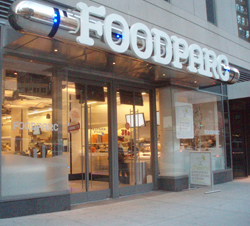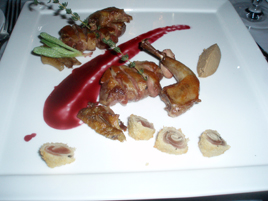NYC's Ten Most Disappointing New Restaurants of 2010
 Tuesday, December 21, 2010 at 09:48AM
Tuesday, December 21, 2010 at 09:48AM In a previous post, I listed my top ten new restaurants of 2010. Now, here are my top ten disappointments. The list ranges from those that were truly bad (Kenmare), to those that merely failed to live up to outsized expectations (Lincoln).
As before, the list is based on my actual experiences at the restaurants, not what others have said, what the chefs are theoretically capable of, or what may have changed since I visited. Some of these places will eventually earn return visits, but remember: I’m spending my own money. I usually wait a while before giving a second chance.
 1. Lincoln. No restaurant opened with higher expectations than the new luxe Italian restaurant at Lincoln Center with former Per Se chef Jonathan Benno. I’ve read reports of some great meals here, but ours was mediocre, and most of the pro critics were unimpressed. The space is terrible, and that can’t be fixed, but Benno won’t go down without a fight. If Lincoln is the year’s biggest disappointment, it’s also the one most likely to improve.
1. Lincoln. No restaurant opened with higher expectations than the new luxe Italian restaurant at Lincoln Center with former Per Se chef Jonathan Benno. I’ve read reports of some great meals here, but ours was mediocre, and most of the pro critics were unimpressed. The space is terrible, and that can’t be fixed, but Benno won’t go down without a fight. If Lincoln is the year’s biggest disappointment, it’s also the one most likely to improve.
 2. Colicchio & Sons. Coming from a chef with Tom Colicchio’s pedigree, this place figured to be excellent. But Colicchio botched the roll-out, opening with an à la carte menu, switching to an expensive prix fixe after just a month in business, and then switching back less than a month later. Practically all the reviews were negative, except for a bizarre trifecta from Sam Sifton of the Times. The restaurant is now off the radar, and we’ve heard nothing that would justify a return visit.
2. Colicchio & Sons. Coming from a chef with Tom Colicchio’s pedigree, this place figured to be excellent. But Colicchio botched the roll-out, opening with an à la carte menu, switching to an expensive prix fixe after just a month in business, and then switching back less than a month later. Practically all the reviews were negative, except for a bizarre trifecta from Sam Sifton of the Times. The restaurant is now off the radar, and we’ve heard nothing that would justify a return visit.
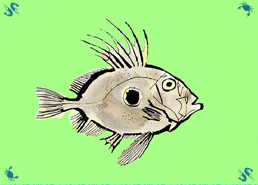 3. John Dory Oyster Bar. The re-located April Bloomfield/Ken Friedman seafood place bears no comparison to the original John Dory, which was in a poor location, but was otherwise a very good restaurant. Our meal here wasn’t bad, but it’s nowhere near what this team is capable of. Let’s hope that April is able to find her mojo, as she has done at The Spotted Pig and The Breslin.
3. John Dory Oyster Bar. The re-located April Bloomfield/Ken Friedman seafood place bears no comparison to the original John Dory, which was in a poor location, but was otherwise a very good restaurant. Our meal here wasn’t bad, but it’s nowhere near what this team is capable of. Let’s hope that April is able to find her mojo, as she has done at The Spotted Pig and The Breslin.
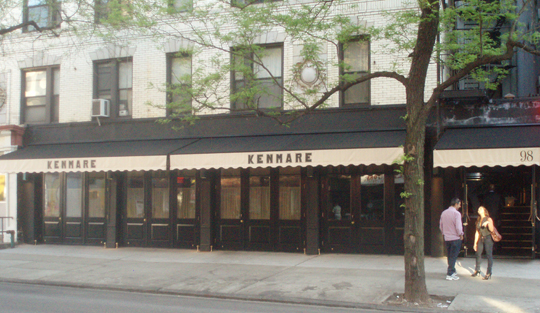 4. Kenmare. This Italian restaurant from chef Joey Campanaro was probably the worst new restaurant we visited in 2010. Given Campanaro’s track record (Little Owl, Market Table, and before that The Harrison and Pace), who would have expected it to be this bad? Was ever a “consulting” gig more phoned-in than this one?
4. Kenmare. This Italian restaurant from chef Joey Campanaro was probably the worst new restaurant we visited in 2010. Given Campanaro’s track record (Little Owl, Market Table, and before that The Harrison and Pace), who would have expected it to be this bad? Was ever a “consulting” gig more phoned-in than this one?
 5. Zengo. This restaurant, built on the site of four failed Jeffrey Chodorow places, is so comically bad that the critics couldn’t even bring themselves to review it. The Latin–Asian fusion concept is unfocused and poorly executed. The nominal chef, Richard Sandoval, has fifteen restaurants in five U. S. cities and three countries. This one never got the attention it needed.
5. Zengo. This restaurant, built on the site of four failed Jeffrey Chodorow places, is so comically bad that the critics couldn’t even bring themselves to review it. The Latin–Asian fusion concept is unfocused and poorly executed. The nominal chef, Richard Sandoval, has fifteen restaurants in five U. S. cities and three countries. This one never got the attention it needed.
 6. Lotus of Siam. This is the New York branch of a legendary Las Vegas standout, which Gourmet critic Jonathan Gold anointed the “best Thai restaurant in North America.” But none of the Las Vegas staff moved to New York: the original chef spent just a few weeks training the New York staff, and then went back home. The result is a watered-down version of the original. It’s such a pity to see a great opportunity missed.
6. Lotus of Siam. This is the New York branch of a legendary Las Vegas standout, which Gourmet critic Jonathan Gold anointed the “best Thai restaurant in North America.” But none of the Las Vegas staff moved to New York: the original chef spent just a few weeks training the New York staff, and then went back home. The result is a watered-down version of the original. It’s such a pity to see a great opportunity missed.
 7. Bar Basque. I had high hopes for this place, despite the involvement of Jeffrey Chodorow, who builds failed restaurants at a prolific pace. There’s a serious chef here, and a number of critics have had better meals than we did. But there is no getting around the Chodorrific service and the irritating space. Over/under on a new chef or concept: 18 months.
7. Bar Basque. I had high hopes for this place, despite the involvement of Jeffrey Chodorow, who builds failed restaurants at a prolific pace. There’s a serious chef here, and a number of critics have had better meals than we did. But there is no getting around the Chodorrific service and the irritating space. Over/under on a new chef or concept: 18 months.
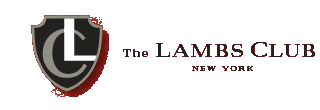 8. The Lambs Club. This was supposed to be Geoffrey Zakarian’s big comeback, after his pair of three-star standouts, Town and Country, imploded after long declines. Our meal here did not live up to Zakarian’s talents, to the space, or to the excellent service team. On the first night of service, we saw Zakarian dining at Lincoln, which tells you how committed he is to the project. We’ll be giving a pass to his other new restaurant, The National.
8. The Lambs Club. This was supposed to be Geoffrey Zakarian’s big comeback, after his pair of three-star standouts, Town and Country, imploded after long declines. Our meal here did not live up to Zakarian’s talents, to the space, or to the excellent service team. On the first night of service, we saw Zakarian dining at Lincoln, which tells you how committed he is to the project. We’ll be giving a pass to his other new restaurant, The National.
 9. Nuela. This pan-Latin restaurant was in gestation so long that the original chef, Douglas Rodriguez, gave up. With Adam Schop now in charge, we found an overly long menu (60+ items) with far too many duds, a horrific décor and an overly-loud sound track. This restaurant concept was sorely in need of an editor.
9. Nuela. This pan-Latin restaurant was in gestation so long that the original chef, Douglas Rodriguez, gave up. With Adam Schop now in charge, we found an overly long menu (60+ items) with far too many duds, a horrific décor and an overly-loud sound track. This restaurant concept was sorely in need of an editor.
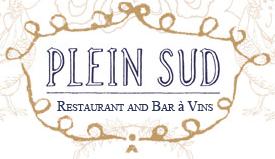 10. Plein Sud. Here’s another case of missing expectations. Plein Sud offers serviceable comfort food, but chef Ed Cotton (who made it to the finals of Top Chef Season 7) did far, far better work at Veritas and BLT Market.
10. Plein Sud. Here’s another case of missing expectations. Plein Sud offers serviceable comfort food, but chef Ed Cotton (who made it to the finals of Top Chef Season 7) did far, far better work at Veritas and BLT Market.



